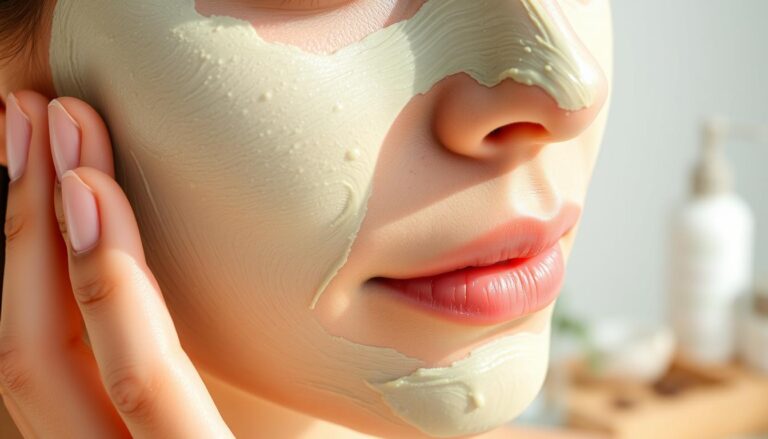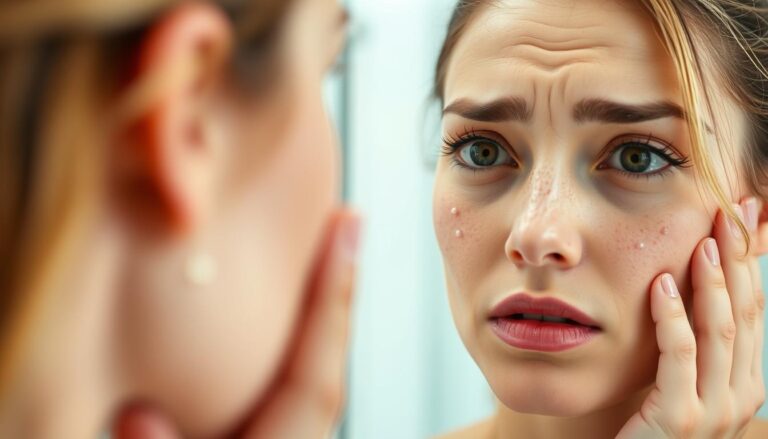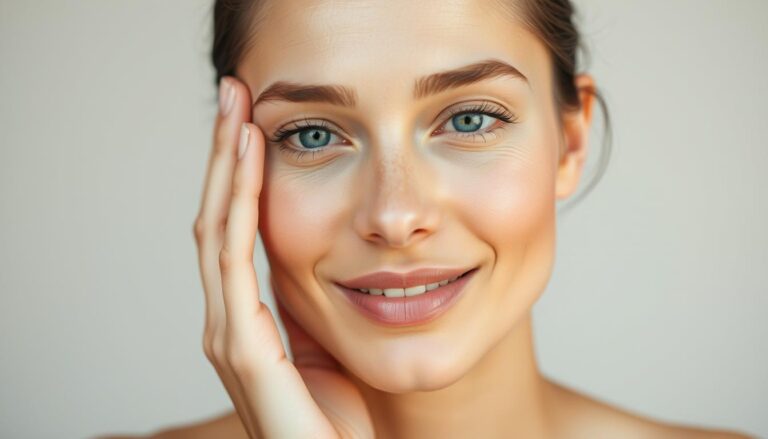At Glowskinhub.com, we believe beauty isn’t just a look—it’s a feeling

What is skin cycling and should you try it?
The world of skincare is constantly evolving, with new trends and techniques emerging regularly. One such trend that has gained significant attention is Skin cycling, a method that involves alternating between different skincare products and routines to achieve optimal results.
Skin cycling has become increasingly popular, particularly among those with oily Skin, as it allows for a tailored approach to managing sebum production and reducing the appearance of pores. By incorporating a varied skincare routine, individuals can potentially improve the overall health and appearance of their Skin.
Key Takeaways
- Understand the concept of Skin cycling and its benefits.
- Learn how to incorporate Skin cycling into your existing skincare routine.
- Discover the potential advantages of Skin cycling for oily Skin.
- Explore the different products and techniques involved in Skin cycling.
- Consider whether Skin cycling is suitable for your individual skincare needs.
Understanding Skin Cycling: The Latest Skincare Trend
Skin cycling, a skincare regimen that involves alternating between different products, has taken the Beauty industry by storm. This method has gained popularity due to its promising results in improving Skin health, particularly for individuals with oily Skin.
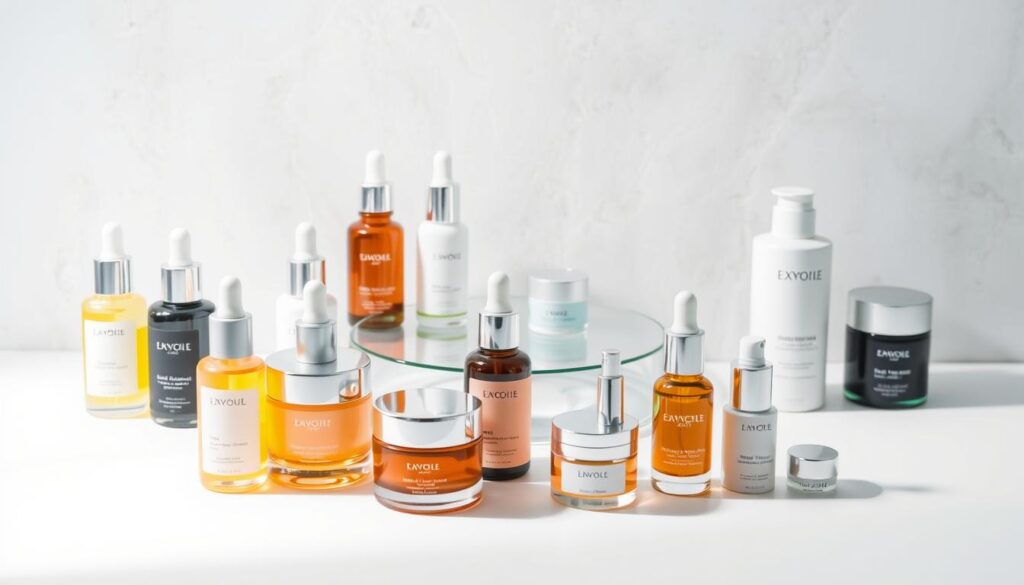
The Origins of Skin Cycling
The concept of Skin cycling is rooted in dermatological research, aiming to optimize Skin health by alternating between different skincare products.
Who Created the Skin Cycling Method
The Skin cycling method was developed by dermatologists seeking to enhance the efficacy of skincare routines. By carefully selecting and alternating products, individuals can maximize the benefits while minimizing potential adverse effects.
How It Gained Popularity
Skin cycling gained popularity through social media platforms and skincare communities, where enthusiasts shared their experiences and results. As more people began to adopt this method, its popularity grew, making it a significant skincare trend.
How Skin Cycling Differs from Traditional Skincare Routines
Unlike traditional skincare routines that often involve using the same products consistently, Skin cycling involves alternating between different products, such as exfoliants, retinoids, and moisturizers, to achieve a balanced oily Skin routine. This approach can be particularly beneficial for individuals with oily Skin, as it helps in managing oil production without over-drying the Skin.
By understanding the principles behind Skin cycling and its differences from traditional methods, individuals can make informed decisions about their skincare for oily Skin. Whether you’re looking to enhance your existing routine or start a new one, Skin cycling offers a promising approach to achieving healthier, more balanced Skin.
The Science Behind Skin Cycling
Delving into the science of Skin cycling reveals how this method can significantly improve Skin health. At its core, Skin cycling is based on understanding and working with the Skin’s natural renewal process.
How Your Skin’s Natural Renewal Process Works
The Skin’s natural renewal process involves the continuous replacement of old Skin cells with new ones, a process that slows down with age. This natural process is crucial for maintaining healthy, vibrant Skin. The Skin’s natural barrier function is also vital, protecting against external factors like pollution and UV damage.
On average, the Skin renews itself every 28 days, though this cycle can be longer in older individuals. Understanding this process is key to appreciating how Skin cycling can be beneficial.
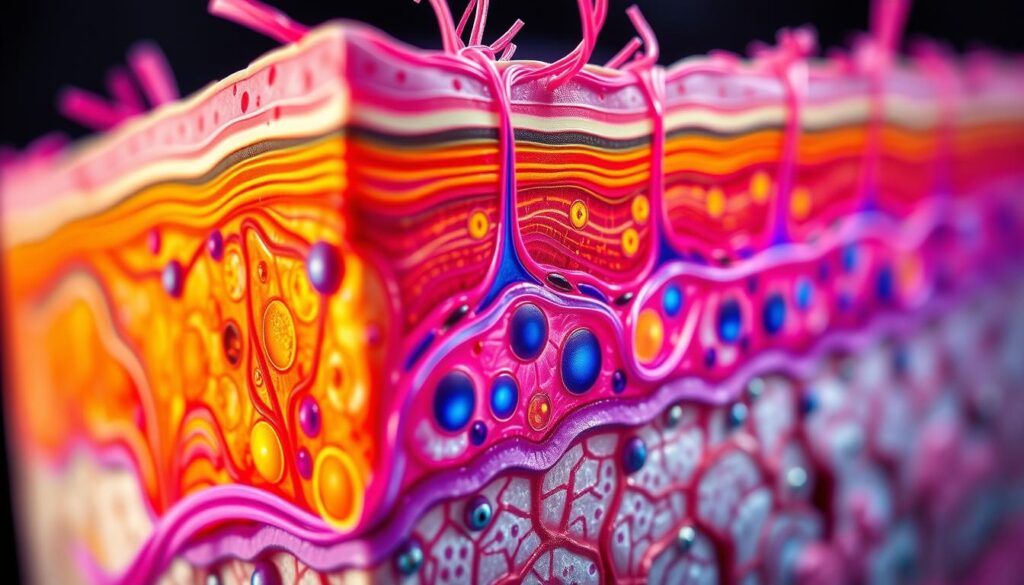
Why Alternating Products Can Benefit Skin Health
Alternating products, as advocated in Skin cycling, can significantly benefit Skin health by avoiding the pitfalls of overusing certain products. This method allows the Skin to recover and adapt, potentially leading to better product efficacy and reduced irritation.
The Concept of Skin Recovery
Skin recovery is a critical aspect of Skin cycling, allowing the Skin to rest and rejuvenate between active product nights. This recovery phase is essential for preventing irritation and ensuring the Skin remains resilient.
Preventing Product Overuse and Sensitisation
By alternating between different products, Skin cycling helps prevent overuse and sensitisation, common issues associated with consistent use of active skincare ingredients. A key benefit is that it reduces the risk of adverse reactions, making skincare more tolerable for sensitive Skin types.
Some key benefits of Skin cycling include:
- Enhanced Skin health through balanced product use
- Reduced risk of product overuse and sensitisation
- Improved Skin resilience and tolerance
What is Skin Cycling and Should You Try It?
Skin cycling has emerged as a revolutionary skincare approach, but is it the right fit for your Skin type? This method involves a strategic rotation of skincare products to maximize their effectiveness and minimize irritation.
By understanding the core principles of Skin cycling, individuals can determine whether this technique is suitable for their Skin concerns and needs.
The Core Principles of a Skin Cycling Routine
The core principle of Skin cycling lies in its cyclical pattern, typically involving a four-night cycle that includes exfoliation, retinoid application, and two nights of recovery.
Exfoliation helps remove dead Skin cells, while retinoids promote cell turnover and collagen production. The recovery nights allow the Skin to rest and rejuvenate.

Who Can Benefit Most from This Approach
Skin cycling can be beneficial for various Skin types, particularly for those with sensitive Skin or individuals new to active ingredients.
Benefits for Those with Sensitive Skin
For individuals with sensitive Skin, Skin cycling can help minimize irritation by limiting the use of active ingredients to specific nights, thus allowing the Skin to tolerate them better.
This approach can be particularly helpful when incorporating oily Skin products or products containing active ingredients that might otherwise cause irritation.
How It Helps Those New to Active Ingredients
Skin cycling is also beneficial for those who are new to using active ingredients like retinoids or exfoliants. By introducing these products gradually, Skin cycling helps the Skin adjust and reduces the risk of adverse reactions.
This method enables users to balance their Skin’s needs while maximizing the effectiveness of their skincare products, making it a valuable technique for achieving healthier Skin.
The Classic 4-Night Skin Cycling Method
The classic 4-night Skin cycling method is a straightforward approach to achieving healthier Skin. This regimen involves a cycle of exfoliation, retinoid application, and recovery nights, tailored to maximize the benefits of each product used.
Night 1: Exfoliation
Exfoliation is a critical step in any skincare routine, helping to remove dead Skin cells and unclog pores. Exfoliants can be either physical (scrubs, brushes) or chemical (alpha-hydroxy acids, beta-hydroxy acids).
Types of Exfoliants to Consider
When choosing an exfoliant, consider your Skin type. For sensitive Skin, gentle chemical exfoliants like mandelic acid are often recommended. Those with oily Skin may benefit from stronger exfoliants like salicylic acid.
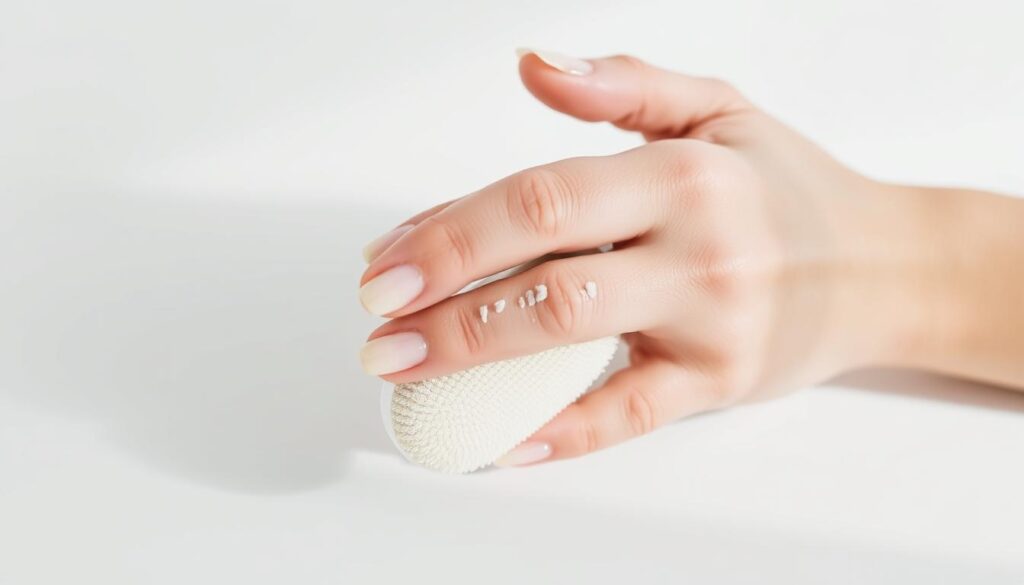
Night 2: Retinoid Application
Retinoids, derivatives of vitamin A, are renowned for their anti-ageing properties and ability to enhance Skin renewal. They help in reducing fine lines, wrinkles, and Skin discoloration.
Choosing the Right Retinoid Strength
Retinoid strength varies, and choosing the right one depends on individual Skin concerns and sensitivity. Beginners may start with a lower concentration to avoid irritation.
Nights 3-4: Recovery
Recovery nights are essential for allowing the Skin to repair and rejuvenate after exfoliation and retinoid application. During these nights, focus on nourishing and hydrating the Skin.
Essential Recovery Ingredients
Key ingredients for recovery include hyaluronic acid for hydration, ceramides for barrier repair, and soothing agents like aloe vera or green tea extract to calm the Skin.
Skin Cycling for Oily Skin Types
Oily Skin types often struggle to balance oil control with hydration, a challenge that Skin cycling can help address. By alternating between different products and giving the Skin periodic breaks, Skin cycling can help regulate oil production and improve overall Skin health.
Why Skin Cycling Works Well for Oily Skin
Skin cycling is beneficial for oily Skin because it allows for the targeted use of products that control oil production and reduce acne, while also giving the Skin time to recover and maintain its natural barrier function. Using an oily Skin treatment on specific nights can help control sebum production, reducing the appearance of pores and minimizing acne.
Modified Cycling Schedule for Oily Skin
For oily Skin types, a modified Skin cycling schedule may be more effective. This can involve adjusting the duration of the recovery nights or incorporating products that are specifically designed to control oil production.
Potential for Shorter Recovery Periods
Oily Skin may be able to tolerate shorter recovery periods due to its natural oil production. This means that some individuals with oily Skin might be able to shorten their recovery nights, allowing for more frequent application of active ingredients.
Incorporating Oil-Control Products
Using oil-control products on specific nights can be particularly beneficial. Look for products containing ingredients like salicylic acid or tea tree oil, which are known for their ability to control oil production and reduce acne.

Balancing Oil Production Without Stripping the Skin
One of the key challenges in managing oily Skin is finding a balance between controlling oil production and maintaining the Skin’s natural barrier. Using a gentle, non-comedogenic oily Skin moisturizer on recovery nights can help achieve this balance, ensuring that the Skin remains hydrated without clogging pores.
By adopting a Skin cycling routine tailored to oily Skin, individuals can better manage their Skin’s oil production, reduce the occurrence of acne, and achieve a more balanced complexion.
Essential Products for an Effective Skin Cycling Routine
A well-curated selection of skincare products is the backbone of an effective Skin cycling regimen. To get the most out of this approach, it’s crucial to understand which products are best suited for each phase of the cycle.
Best Exfoliants for the Exfoliation Night
For the exfoliation night, choosing the right exfoliant is key. For those with oily Skin, salicylic acid is a popular choice due to its ability to penetrate deep into pores and reduce sebum.
Salicylic Acid Options for Oily Skin
Some effective salicylic acid products include:
- Paula’s Choice 2% BHA Liquid
- The Ordinary Salicylic Acid 2% Solution
Recommended Retinoids for Retinoid Night
Retinoids are a cornerstone of anti-ageing skincare, promoting cell turnover and collagen production. For oily Skin, it’s best to opt for oil-free retinoid formulations to avoid clogging pores.
Oil-Free Retinoid Formulations
Consider the following oil-free retinoids:
- Differin Acne Treatment Gel
- Neutrogena Rapid Wrinkle Repair Night Moisturizer
Gentle Moisturisers and Barrier Repair Products for Recovery Nights
During recovery nights, the focus shifts to nourishing and repairing the Skin barrier. Lightweight moisturisers are ideal for oily Skin, providing hydration without exacerbating oiliness.
Lightweight Moisturisers for Oily Skin
Some recommended lightweight moisturisers include:
- Cetaphil Moisturising Cream
- La Roche-Posay Toleriane Ultra Fluid
Oily Skin Products That Complement Skin Cycling
In addition to the products used during specific nights, incorporating oil-controlling products into your daily routine can enhance the benefits of Skin cycling. Look for products containing ingredients like niacinamide or hyaluronic acid.
| Product Category | Recommended Products | Key Ingredients |
|---|---|---|
| Exfoliants | Paula’s Choice 2% BHA Liquid, The Ordinary Salicylic Acid 2% Solution | Salicylic Acid |
| Retinoids | Differin Acne Treatment Gel, Neutrogena Rapid Wrinkle Repair Night Moisturizer | Retinol, Adapalene |
| Moisturisers | Cetaphil Moisturising Cream, La Roche-Posay Toleriane Ultra Fluid | Hyaluronic Acid, Glycerin |

Common Mistakes to Avoid When Skin Cycling
As Skin cycling gains popularity, it’s crucial to understand the common pitfalls that can hinder its effectiveness. Skin cycling, when done correctly, can significantly improve Skin health, but certain mistakes can undermine its benefits.
Overexfoliation Risks
One of the most common mistakes is overexfoliation. Exfoliating too frequently can strip the Skin of its natural oils, leading to irritation and dryness. It’s essential to balance exfoliation with gentle care to avoid damaging the Skin barrier.
Using Incompatible Products
Another critical error is using products that are not compatible with each other. Certain ingredients can react adversely when combined, causing irritation or reducing the effectiveness of the products.
Ingredients That Shouldn’t Be Combined
For instance, using products containing retinoids and alpha-hydroxy acids (AHAs) or beta-hydroxy acids (BHAs) on the same night can increase the risk of irritation. It’s advisable to alternate these products or use them on different nights as part of a Skin cycling routine.
Not Giving the Process Enough Time
Patience is key when starting a Skin cycling routine. Not giving the Skin enough time to adjust and respond can lead to premature discontinuation. It’s recommended to stick to the routine for at least a few cycles before assessing its effectiveness.
Skipping Sun Protection
Skipping sun protection is another grave mistake. Certain products used in Skin cycling, such as retinoids and exfoliants, can make the Skin more sensitive to the sun, increasing the risk of sun damage. Using a broad-spectrum sunscreen with at least SPF 30 daily is crucial.
| Mistake | Consequence | Prevention |
|---|---|---|
| Overexfoliation | Irritation, dryness | Balance exfoliation with gentle care |
| Using incompatible products | Irritation, reduced effectiveness | Choose compatible products, alternate potentially irritating ingredients |
| Not giving the process enough time | Premature discontinuation | Stick to the routine for at least a few cycles |
| Skipping sun protection | Sun damage, increased sensitivity | Use broad-spectrum sunscreen daily (at least SPF 30) |
By being aware of these common mistakes and taking steps to avoid them, individuals can maximize the benefits of Skin cycling and achieve healthier, more resilient Skin.

Real Results: What to Expect from Skin Cycling
The effectiveness of Skin cycling is often discussed, but understanding the real results is crucial for managing expectations. As you embark on this skincare journey, it’s essential to know what changes you can anticipate and how to adjust your routine accordingly.
Short-term Changes You Might Notice
In the initial stages of Skin cycling, you may notice improvements in Skin texture and a reduction in the appearance of pores. Your Skin may also start to look more radiant due to the exfoliating and retinoid nights.
Some users with oily Skin report a decrease in oil production, making their Skin more balanced. However, it’s crucial to be patient as your Skin adjusts to the new routine.
Long-term Benefits for Skin Health
With consistent Skin cycling, you can expect long-term benefits such as improved Skin elasticity and a reduction in fine lines and wrinkles. The retinoid nights play a significant role in boosting collagen production, which contributes to a more youthful appearance.
Improvements Specific to Oily Skin
For individuals with oily Skin, Skin cycling can help regulate sebum production, reducing the occurrence of acne and blackheads. Using the right products, such as gentle exfoliants and non-comedogenic moisturisers, is key to achieving these benefits.
When to Consult a Dermatologist
If you experience persistent irritation, excessive dryness, or if your Skin doesn’t show any improvement after a few cycles, it may be time to consult a dermatologist. They can provide personalised advice and help you adjust your routine to better suit your Skin type.
Adjusting Your Routine as Your Skin Changes
As your Skin responds to Skin cycling, you may need to make adjustments to your products or schedule. Being attentive to your Skin’s needs and making necessary changes will help you maximise the benefits of Skin cycling.
Conclusion: Is Skin Cycling Right for You?
As we’ve explored the concept of Skin cycling, it’s clear that this skincare approach offers a flexible and effective way to achieve healthier, more balanced Skin. By alternating between exfoliation, retinoid application, and recovery nights, individuals can tailor their skincare routine to their specific needs.
For those with oily Skin, Skin cycling can be particularly beneficial, helping to regulate oil production and reduce the appearance of pores. By incorporating the best skincare routine for oily Skin, individuals can enjoy a clearer, more even-toned complexion.
Ultimately, whether Skin cycling is right for you depends on your Skin type, concerns, and goals. By understanding the principles behind Skin cycling and being mindful of common mistakes to avoid, you can make an informed decision about incorporating this approach into your skincare routine.
With its adaptable nature and focus on Skin health, Skin cycling has the potential to be a valuable addition to many skincare regimens, helping individuals achieve their desired results and maintain a healthy, radiant complexion.

